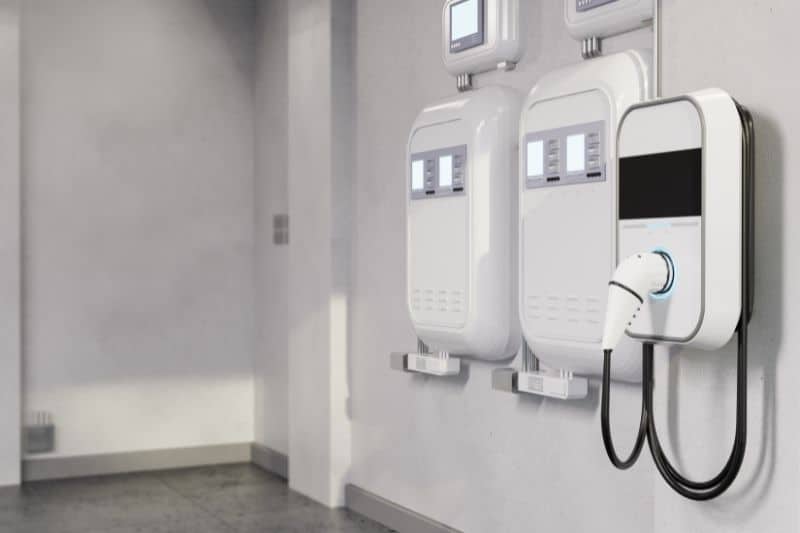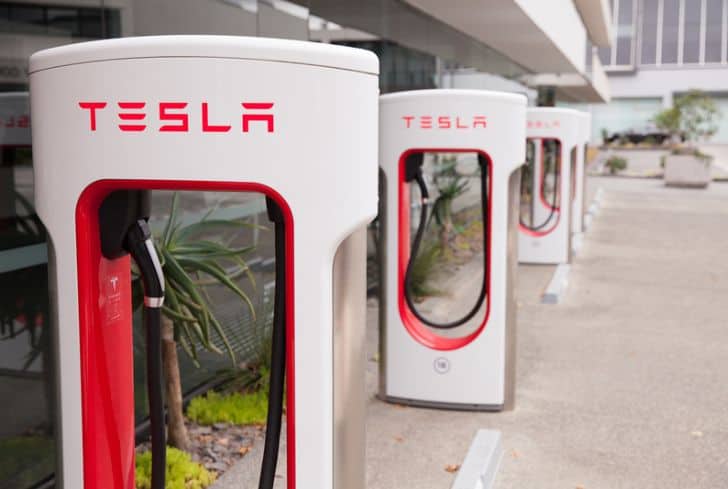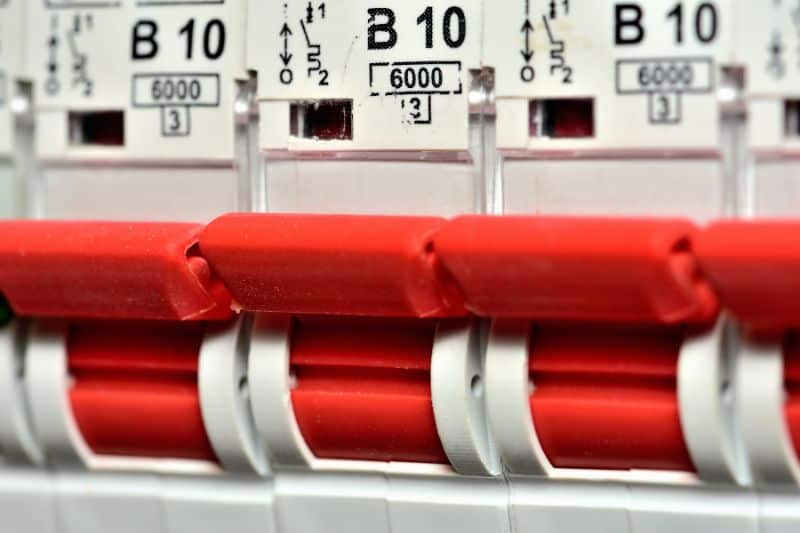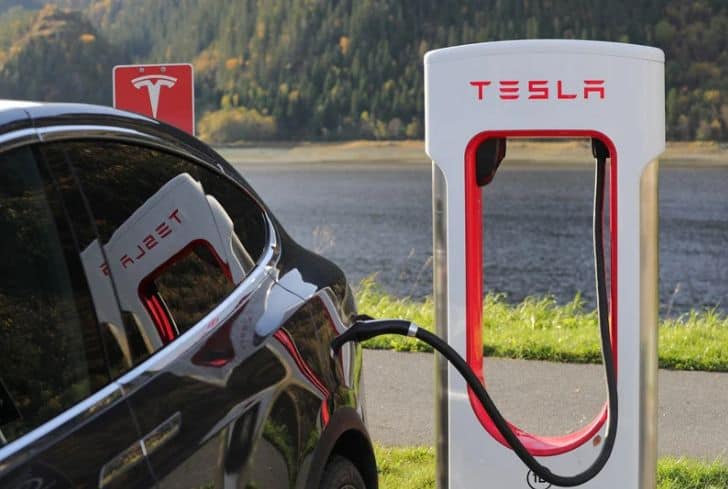Imagine never having to worry about stopping for gas again. No more lines at the pump nor spending money on a resource that quickly runs out. Well, those are just a few benefits of owning a Tesla car.
But obviously, before tapping into the convenience and eco-friendliness of electric cars, you’ll want to know how much electricity they consume. That borrows the question, “How many amps does a Tesla charger draw?”
Well, that’s one common question among the new Tesla owners and those aspiring to be. And in case you belong to either of these categories, you just came to the right place. In this blog post, I’ve compiled all the information you need to know about Tesla charging. And so let’s dive right into it.
Read: How Many Amps Does a Table Saw Use?
How Many Amps Does a Tesla Charger Draw?
A Tesla charger will draw anywhere from 15 amps to 300 amps depending on the charger type and the Tesla model. The lower end of this spectrum is more likely when charging the car from home, whereas the higher end is more likely for commercial charging stations with higher power output.
To begin with, we have three charging levels when it comes to powering your Tesla;
- Level 1
- Level 2
- Level 3
Level 1 is the slowest for EV charging and uses a standard 120 V outlet with an amperage of 15 amps. At this level, your car will gain enough power to cover 3 miles of distance for every hour you leave it on the charger.
Level 2 is considerably faster and uses a 240-volt outlet with an amperage of about 40 amps. It’s available at commercial charging stations and homes when using the Wall Connector. This charging level can give you sufficient power to travel 30 miles for every hour you’ll have it connected to the charger.
Finally, Level 3 is the fastest, using a Superfast charger and 480-volt system. This charging is only available in commercial charging stations and can charge your car at the rate of 300 amps.
But of course, the provided amperage is the max you can attain, and the actual amperage you should use to charge your Tesla depends on its model, as every Tesla draws power differently.
What’s the Fastest Way To Charge a Tesla at Home?
A Tesla wall connector is the fastest way to charge your Tesla in the comfort of your home. This wall connector features a maximum of 11.5 kW and can provide up to 44 miles of range for every hour of charging when connected to a 240-volt electrical system. Depending on the Tesla model, this method should charge your EV in 6 to 12 hours.

Initially, there were two ways to charge your electric vehicle. The first one was using the mobile charger installed in your car. It’s a very slow charging method, even though it allows you to charge your auto at home.
The other is a superfast charger located at commercial charging stations. This type of charging is much faster. But then again, it has the downside of being away from home while charging.
Thankfully, the Tesla wall connector has bridged the gap between these two methods and brought charging speed to the comfort of your home. With a Tesla wall connector, you can have a fully charged EV in 6 to 12 hours, depending on the Tesla model.
With this method, you can get up to 44 miles of range for every hour your car remains connected. However, that may vary depending on how much your Tesla model is designed to pull using this charging method.
For instance, if you have a Tesla Model S, it will gain 32 mph, while Model Y will gain 42 miles in the same charging time. The more efficient Tesla model, the Model 3 Performance, will get 44 miles per hour.
Nonetheless, no matter your Tesla model, a Tesla wall connector is the fastest way to charge your car at home. It’s much faster than a mobile charger and does not require you to be away from home while it is charging.
But then again, installing the Tesla wall connector requires sophisticated wiring that requires professional services.
How Much Does It Cost To Install a Tesla Wall Connector?
The cost of installing a Tesla wall connector will differ depending on your home’s charging hardware and the electrical system. But on average, a Tesla wall connector installation costs between $750 and $1500, depending on the individual customizations needed.
A Tesla wall connector brings you convenience and a higher charge rate, just as aforementioned. But of course, that comes with an extra cost. You must be ready to part with an average of $1200 to make the installation possible.

And, of course, that only covers the installation and doesn’t include the Tesla wall connector unit itself. The unit will cost you an additional $550. So, Altogether, it should cost you in the region of $2000 to have everything running in place.
Read: How Many Amps Does My Garage Door Opener Use?
Can You Charge a Tesla From a Wall Plug at Home?
Yes, you can charge your Tesla from a wall plug at home, but it’s important to note that this is the slowest way of charging. With the minimum power source of 110/120V, you can expect to get about 3 miles per hour.
A standard wall plug is a great option if you don’t have a Tesla wall connector or a dedicated charging station at home. But it can take about 80 hours to attain full charge, depending on the model. That’s slower than most Tesla drivers would want, and sometimes it’s worth it to just drive to the nearest charging station.
Even so, if you can have a Tesla wall connector, you get the best of both worlds – speed and convenience. The installation might cost you a few extra bucks, but it’s the most efficient way to charge your Tesla car at home.
How Fast Does a 120-Volt Home Connection Charge a Tesla?
The exact hours of charging a Tesla on a 120-volt home connection depends on the Tesla model. For instance, Model S can take up to 4 days. So, using a home connection is very slow, even though an inexpensive to boost your electric car.
This method is convenient if you don’t drive your Tesla often and don’t need to charge it quickly. For instance, if you only use it to commute to the workplace that’s only a few miles away, then a 120-volt home connection can suffice.
The time between when you arrive home in the evening and leave the next day should be enough to provide enough power for your next drive. This connection provides roughly 20 amps and charges around 3 miles per hour. So, you won’t have to worry about driving to a charging station unless you’re planning to go on a long journey.
How Fast Does a 240-Volt Home Connection Charge a Tesla?
A 240-volt connection is the most commonly used for Tesla wall connectors. It’s faster and more efficient than a 120-volt home connection. With this kind of connection, you can expect to get around 9-44 miles per hour.
This connection is ideal for Tesla owners who need to charge their vehicles quickly, especially if they’re planning a long trip. A car can take 6 to 30 hours to charge, depending on the Tesla model and your home’s power supplies.
What Size Breaker Do I Need For a Tesla Charger?
The ideal breaker size will depend on the amperage of your charger. The National Electrical Codes (NEC) recommend using a breaker that’s 125% larger than the maximum amperage of your charger, just to be safe.
That means if you need an amp breaker that can support 10 amps, you should get one that’s more than 12.5 amps. This is just to ensure there’s no power overload or short circuit. And, of course, you need to factor in the total load the breaker will support.
For instance, if your Tesla charger draws 32 amps, you’ll need a 40-amp breaker. That way, the breaker size will be large enough to comfortably handle the load of your charger without the risk of overload or short circuit.
Can I Use a 60 Amp Breaker For Tesla?
Yes, you can use a 60 amp breaker for your Tesla charging. However, there’s a caveat: this setup is suitable for models that consume up to 48 amps, such as the long-range variant, which constitutes 80% of its rated capacity. This surpasses the amperage drawn by the majority of units during home charging.
Using a 60-amp breaker will more often suffice for level 2 charging. As seen, most Tesla models draw around 40 amps when charging, so you won’t have to worry about overloading your breaker.
Can You Charge a Tesla With a 30 Amp Breaker?
A 30-amp breaker will suffice for a Tesla charger only if you use a level 1 charger. A 30-amp breaker means the charger should draw a maximum current of 24 amps, which is more than Tesla needs when charging at level 1. charge a Tesla when using level 1.

Actually, most Tesla chargers will draw about 15 amps when using Level 1 charging. 125% of 15 amps is 18.75, which means that even a 20-amp breaker should be enough. But then, if you go for the 20-amp breaker, you can’t have any other electrical appliances connected to the same electrical circuit.
Are Superchargers Faster than Home Charging?
Superchargers are obviously faster than home charging and quickly charge your Tesla when on the go. Some, like the 250 kW V3 Supercharger, can deliver up to 200 miles of range in just 15 minutes. That’s over 10 times faster than the fastest home charging method.
Superchargers use up to 480 volts and can pump up to 300 amps, delivering charging speeds no home charger option can match. They are ideal for long-distance trips, and you won’t have to worry about range anxiety when out on the road.
But then again, there’s no single way you can enjoy this speed with home charging. Such charging needs more amperage and voltage than an average home electrical service can deliver.
Read: How Many Amps Does a LED Light Bulb Draw?
Final Verdict
A Tesla charger amperage varies from 15 to 300 amps depending on the charging level and Tesla car model. Superfast chargers are the fastest and draw up to 300 amps of current, but you won’t enjoy the convenience of home charging.
The standard wall plug is more convenient but takes longer than you might be willing to pack your patience. But thankfully, the new Tesla wall connector brings fast charging to the convenience of your home. It’s still not as fast as supercharging, but it’s much better than the standard wall socket.






